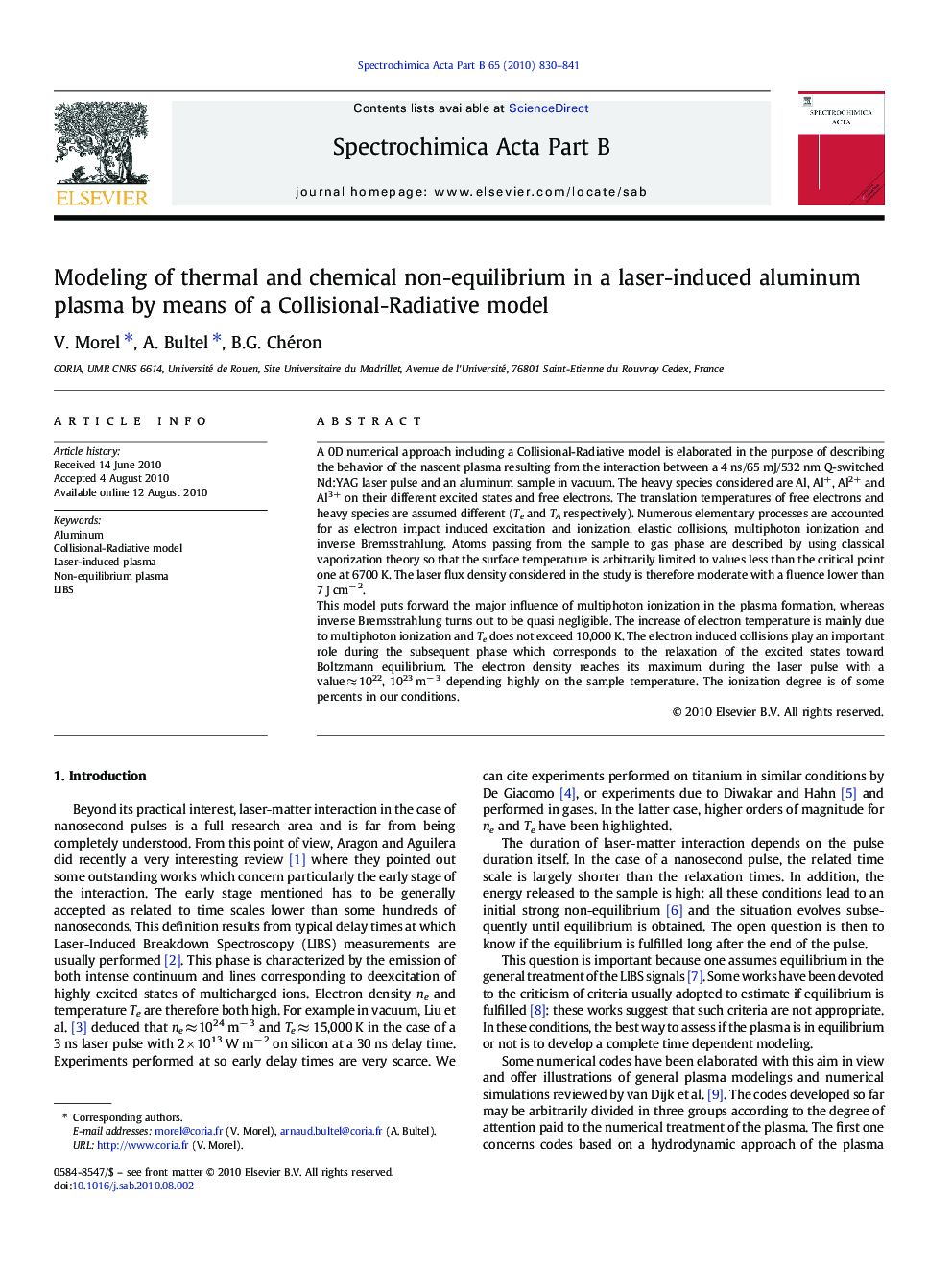| Article ID | Journal | Published Year | Pages | File Type |
|---|---|---|---|---|
| 1240912 | Spectrochimica Acta Part B: Atomic Spectroscopy | 2010 | 12 Pages |
A 0D numerical approach including a Collisional-Radiative model is elaborated in the purpose of describing the behavior of the nascent plasma resulting from the interaction between a 4 ns/65 mJ/532 nm Q-switched Nd:YAG laser pulse and an aluminum sample in vacuum. The heavy species considered are Al, Al+, Al2+ and Al3+ on their different excited states and free electrons. The translation temperatures of free electrons and heavy species are assumed different (Te and TA respectively). Numerous elementary processes are accounted for as electron impact induced excitation and ionization, elastic collisions, multiphoton ionization and inverse Bremsstrahlung. Atoms passing from the sample to gas phase are described by using classical vaporization theory so that the surface temperature is arbitrarily limited to values less than the critical point one at 6700 K. The laser flux density considered in the study is therefore moderate with a fluence lower than 7 J cm− 2.This model puts forward the major influence of multiphoton ionization in the plasma formation, whereas inverse Bremsstrahlung turns out to be quasi negligible. The increase of electron temperature is mainly due to multiphoton ionization and Te does not exceed 10,000 K. The electron induced collisions play an important role during the subsequent phase which corresponds to the relaxation of the excited states toward Boltzmann equilibrium. The electron density reaches its maximum during the laser pulse with a value ≈ 1022, 1023 m− 3 depending highly on the sample temperature. The ionization degree is of some percents in our conditions.
